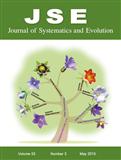Xiao-Fang Jin, Zhong-Ming Ye, Qing-Feng Wang, Chun-Feng Yang
Sensitive stigma has been recognized to facilitate outcrossing. We hypothesized that species with different levels of sensitivity might have corresponding differences in components of their breeding system. In this study, three Mazus species with bilobed stigmas were used to test the hypothesis. We explored stigma behaviors of the species in reaction time, recovery time, permanent closing time, and the minimum pollen load causing permanent closure. We investigated floral traits, pollinator type and behavior, pollination intensity, and natural schedule of pollen deposition on stigma. Moreover, we evaluated the mating system of the species by checking seed set after controlled pollination treatments, namely, natural flowers with open pollination, enclosed flowers without pollination, and enclosed flowers with self and outcross hand pollination. Results indicated that stigma of M. pumilus (N. L. Burman) Steenis was not sensitive, whereas stigmas of M. miquelii Makino and M. stachydifolius (Turcz.) Maxim. closed and reopened quickly in response to pollination. Accordingly, hand pollination treatments revealed that seed set of self-spontaneous pollination in M. pumilus was similar to the other treatments. For M. miquelii, outcross pollen resulted in significantly higher seed set than self-pollen.Mazus stachydifolius was self-incompatible. Additionally, the corresponding characteristics in other components of the breeding system for each species were found. Our study indicated that the sensitivity of bilobed stigma might be linked with floral traits and the mating system in a given species. Sensitive stigma should be regarded as an evolutionary mechanism for enhancement of outcrossing.

